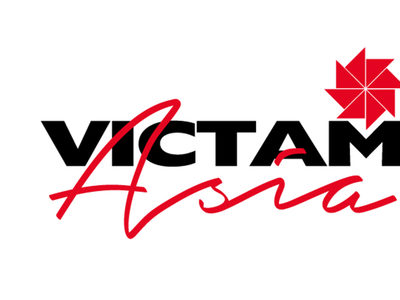Sweden is the third largest country in the European Union, with only France and Spain covering a greater area, but it has a relatively small population. Even though part of its area lies north of the Arctic Circle much of its area has a temperate climate and the country has an efficient agricultural sector.
“In spite of its northerly location, Sweden enjoys a favorable climate,” the Swedish Board of Agriculture says in its guide to the sector. “However, agriculture faces very different conditions in the north compared to the south. The growing season is almost 100 days longer in the southern province of Skåne compared to Norrland in the north.”
Structural change in agriculture has in the last 50 years resulted in a sharp decline in the number of farms, and at the same time the farms have grown larger, the Swedish Board of Agriculture said. “Farmers have made large investments in machinery and become more and more specialized in areas like cereals, dairy or the rearing of pigs and bovine animals,” it said.
“Most farms are family businesses in which the family itself does most of the work and combines farming with employment in other activities. One-third of all enterprises are so-called combination enterprises, which means that they combine income from farming with income from related activities. This includes, for instance, forestry or contracting. It is also increasingly common for farming to be combined with tourism.”
Wheat and barley are among the most important products of Sweden’s farms. The European grain trade organization COCERAL put Sweden’s total soft wheat production in 2013 at 1.928 million tonnes from 326,000 hectares. The previous year’s crop was 2.312 million tonnes from 369,000 hectares.
The country’s barley crop is projected at 1.814 million tonnes, from 392,000 hectares, compared with 1.643 million from 361,000 hectares the year before. Of the total, 1.734 million tonnes from 379,000 hectares is spring barley (previous year was 1.643 million from 361,000 hectares). Sweden also produced 147,000 tonnes of rye, up from 140,000 tonnes the year before, on an area of 25,000 hectares. The oat crop was 798,000 tonnes from 200,000 hectares compared with 744,000 tonnes on 195,000 hectares the year before.
The grains crop also included 58,000 tonnes of sorghum grown on 17,000 hectares (53,000 tonnes on 18,000 hectares last year) and 123,000 tonnes of triticale from 23,000 hectares (141,000 from 24,000 hectares last year).
The grain trade body put Sweden’s rapeseed production at 310,000 tonnes from 123,000 hectares in 2013, down from 318,000 tonnes from 107,000 hectares the year before. The country also produced 5,000 tonnes of sunflower seeds from 4,000 hectares, up from 4,000 tonnes from 3,000 hectares the prior year.
Milling industry
According to Sweden’s milling trade association, the Swedish flour milling industry consists of around 10 milling plants, with a combined annual turnover of around SEK 1.5 billion.
“The industry is efficient, and staffing levels are relatively low,” it said. “The financial margins are small, but the quantity is nevertheless significant. If a turnover of around SEK 1 million per employee is normal, the corresponding figure within the flour milling industry is roughly 10 times that amount.”
Winter wheat is the most common grain in Sweden, followed by barley, oats and rye.
“A typical Swedish harvest is around 5 to 5.5 million tonnes of grain, of which around 600,000 tonnes is sent for milling at flour mills for human consumption,” it said. “The remainder is mostly used as animal feed. Like most European nations, Sweden is self-sufficient in terms of growing and milling grain, and normally has surplus production of 1 million tonnes per year.
“The flour milling industry is often described as being very local, since the milling always takes place locally as it is much easier and cheaper to transport grain than flour. These days, the price of grain is controlled by the world market, according to supply and demand. For example, the price rose in Sweden in 2010 as a result of the drought in Russia that led to much of the crop failing.”
According to the European Flour Millers, the Swedish industry is highly concentrated, with two of the mills producing more than 100,000 tonnes, while five additional mills produce over 25,000 tonnes of total flour production. It puts capacity usage at 70%.
Varying yields and GM
The Swedish Board of Agriculture points out that crop yields vary sharply between regions.
“Yields are the largest in the plain districts in the south and the northern fields yield the least per hectare,” its guide to the country’s agriculture said. “Different climate conditions also explain crop distribution. In the north, crop production mostly comprises forage and coarse grains. Bread grain is mostly grown in the plain districts of south and central Sweden.
“Oilseed production, mostly rapeseed and colza, is also located in the southern and central areas. Potatoes are grown in all of Sweden, whereas sugar beets are only grown in the southernmost parts.”
Sweden is identified as a supporter of the introduction of biotech crops. A USDA attaché report on GMOs in the E.U., published in July, points out that the country has consistently voted for GM approvals.
BASF’s Amflora potato, a genetically engineered variety approved for cultivation in the E.U. since March 2010, was grown on 150 hectares in Sweden in 2010.
Ethanol
According to the ethanol producer SEKAB, E85 fuel is available at more than 1,500 locations in Sweden.
“Sweden’s distribution system for E85 is unique in Europe. No other country has carried out such large and consistent efforts to make biofuels available to everyone,” it said.
SEKAB produces ED95, an ethanol-based fuel for adapted diesel engines, consisting of 95% pure ethanol with the addition of ignition improver, lubricant and corrosion protection.
Importance of Lantmännen
The farmer-owned business Lantmännen plays an important role in the Swedish grains sector.
“Lantmännen is one of the largest agriculture, machinery, energy and food groups in the Nordic region,” its latest interim report said. “Examples of our brands are AXA, Kungsörnen, GoGreen, Hatting, Schulstad and Gooh. Owned by 33,500 Swedish farmers, we have approximately 8,600 employees, a presence in 22 countries and revenues of approximately SEK 33 billion. Our company is founded on knowledge and values built up through generations of owners. With research, development and operations throughout the chain, we are able to take responsibility from field to fork.”
Lantmännen’s subsidiaries include milling group Cerealia and the bakery company Unibake.
Common Agricultural Policy
As Sweden is a member of the European Union, agricultural policy in Sweden is managed as part of the E.U.’s Common Agricultural Policy. For the Federation of Swedish Farmers, it’s a priority to make sure that the CAP is managed fairly.
“It is essential to have a level playing field if the green sector is to achieve this vision,” the Federation of Swedish Farmers said on the CAP and the Swedish farm sector. “One of the challenges for Swedish farmers is to obtain payment for the added value that is created in Swedish production by the high requirements on quality in production, in terms of animal welfare, environmental protection and food safety.”
It also notes consolidation in Swedish agriculture. “The number of farm businesses has decreased sharply,” it said. “Compared with the 1970s, the number has more than halved. Farm size in terms of area has increased strongly over the same period.”
It put the total arable area in Sweden at 2.7 million hectares, a figure which ignores farms under two hectares, and the total number of grain producing farms at 32,700. The average farm size is 37 hectares of arable land.
Key Facts
Capital: Stockholm
Population: 9,119,423 (July 2013 est.)
Religions: Lutheran 87%, other (includes Roman Catholic, Orthodox, Baptist, Muslim, Jewish, and Buddhist) 13%.
Location: Northern Europe, bordering the Baltic Sea, Gulf of Bothnia, Kattegat, and Skagerrak, between Finland and Norway.
Government: Constitutional monarchy. Chief of state: King Carl XVI Gustaf (since Sept. 19, 1973); head of government: Prime Minister Fredrik Reinfeldt (since Oct. 5, 2006).
Economy: Aided by peace and neutrality for the whole of the 20th century, Sweden has achieved an enviable standard of living under a mixed system of high-tech capitalism and extensive welfare benefits. It has a modern distribution system, excellent internal and external communications, and a highly skilled labor force. In September 2003, Swedish voters turned down entry into the euro system concerned about the impact on the economy and sovereignty. Timber, hydropower and iron ore constitute the resource base of an economy heavily oriented toward foreign trade. Privately owned firms account for the vast majority of industrial output, of which the engineering sector accounts for about 50% of output and exports. Agriculture accounts for little more than 1% of GDP and of employment. Until 2008, Sweden was in the midst of a sustained economic upswing, boosted by increased domestic demand and strong exports. This and robust finances offered the center-right government considerable scope to implement its reform program aimed at increasing employment, reducing welfare dependence, and streamlining the state’s role in the economy. Despite strong finances and underlying fundamentals, the Swedish economy slid into recession in the third quarter of 2008 and the contraction continued in 2009 as deteriorating global conditions reduced export demand and consumption. Strong exports of commodities and a return to profitability by Sweden’s banking sector drove the strong rebound in 2010, which continued in 2011, but growth slipped to 1.2% in 2012. The government proposed stimulus measures in 2012 to curb the effects of a global economic slowdown and boost employment and growth.
GDP per capita: $41,900 (2012 est.); inflation: 0.9% (2012 est.); unemployment: 8% (2012 est.).
Currency: Swedish kronor (SEK): 6.611 kronors equal 1 U.S. dollar (Nov. 19, 2013).
Exports: $178.5 billion (2012 est.): machinery 35%, motor vehicles, paper products, pulp and wood, iron and steel products, chemicals.
Imports: $163.6 billion (2012 est.): machinery, petroleum and petroleum products, chemicals, motor vehicles, iron and steel; foodstuffs, clothing.
Major crops/agricultural products: Barley, wheat, sugar beets; meat, milk.
Agriculture: 1.8% of GDP and 1.1% of the labor force.
Internet: Code: .se; 5.978 million (2010) hosts and 8.398 million (2009) users.
Chris Lyddon is World Grain’s European editor. He may be contacted at: [email protected].





